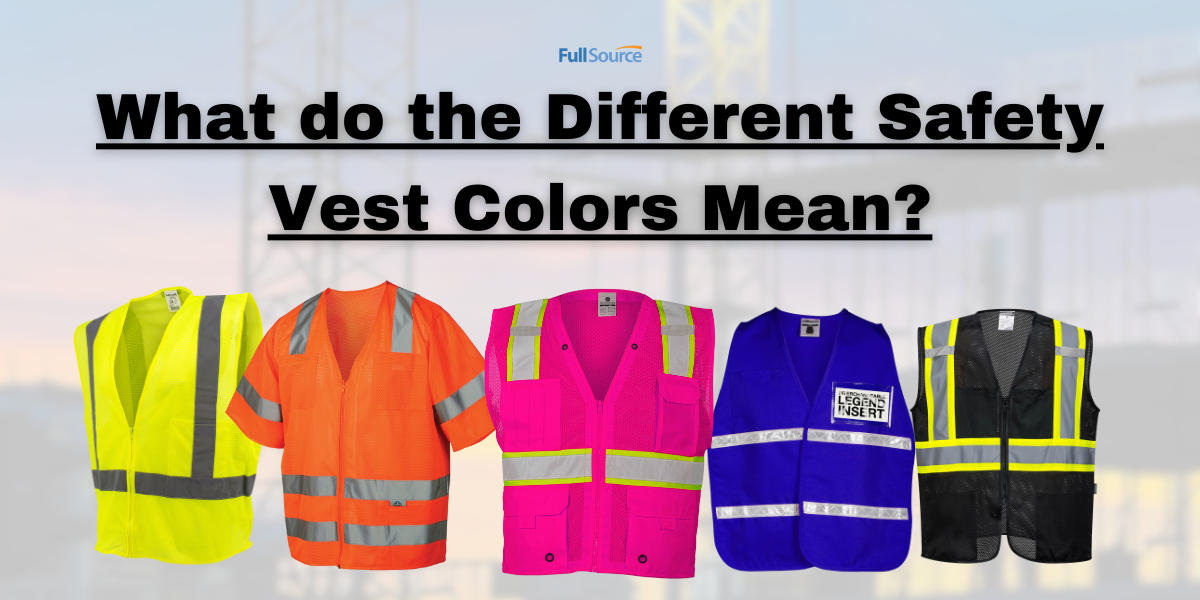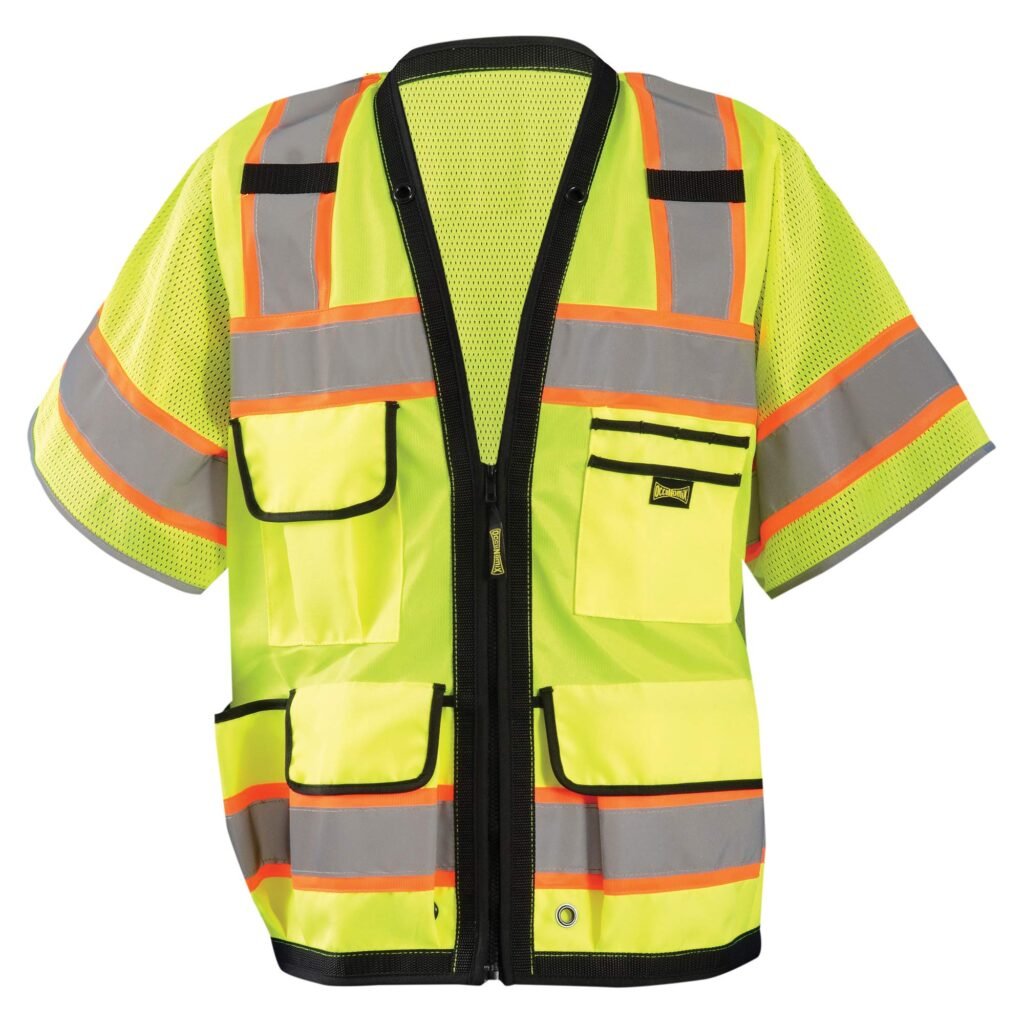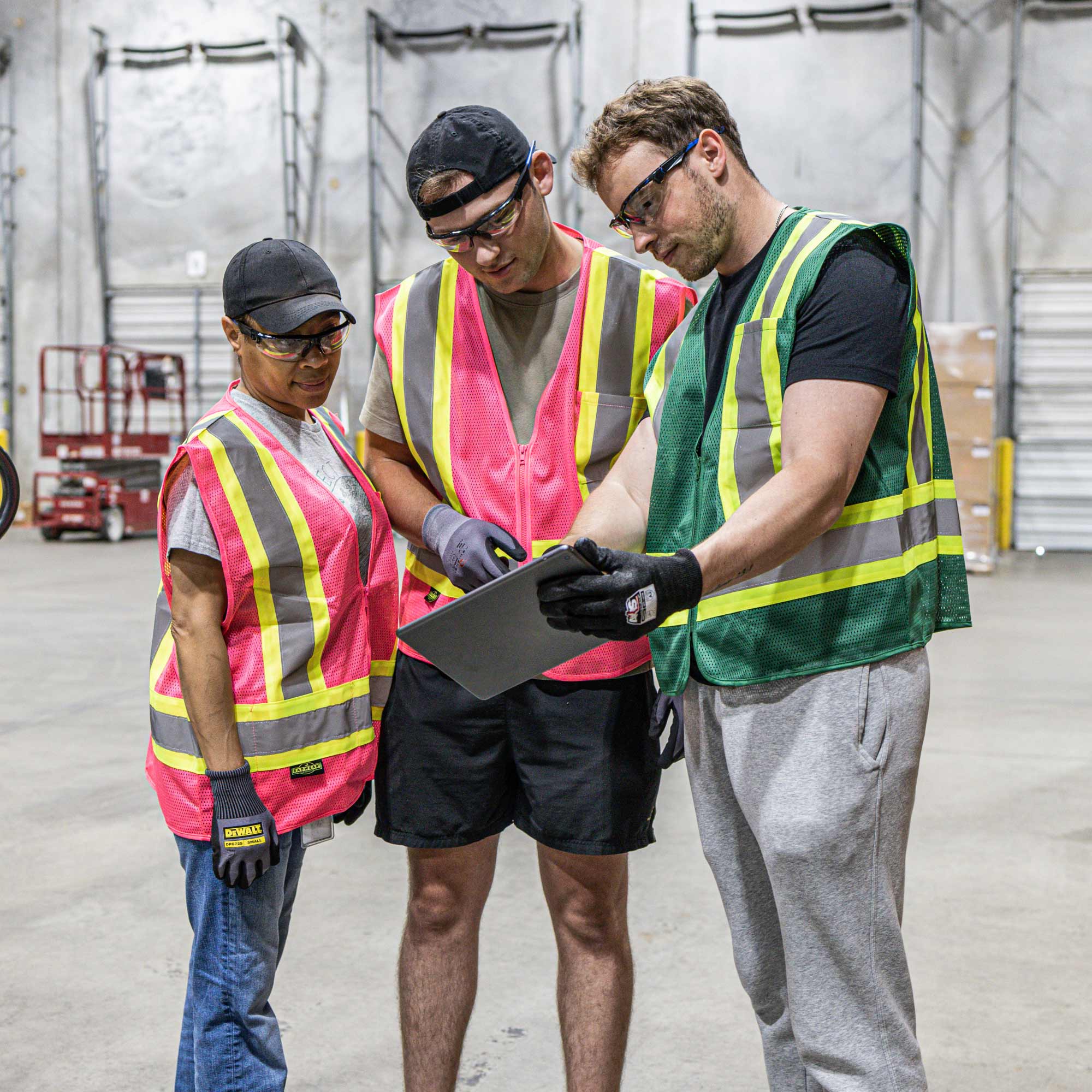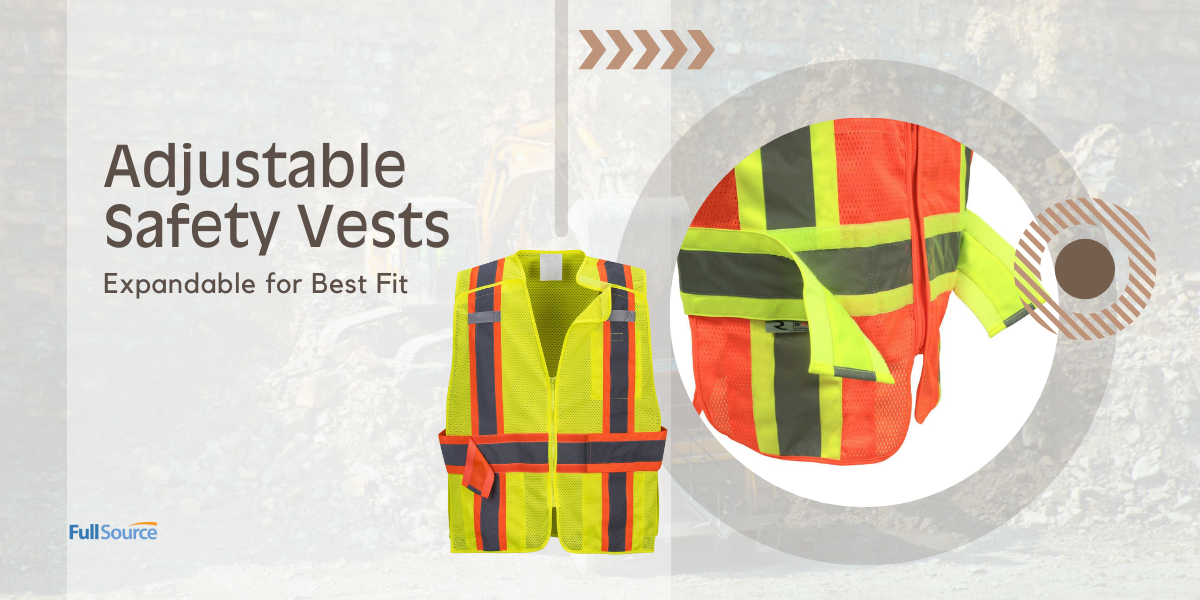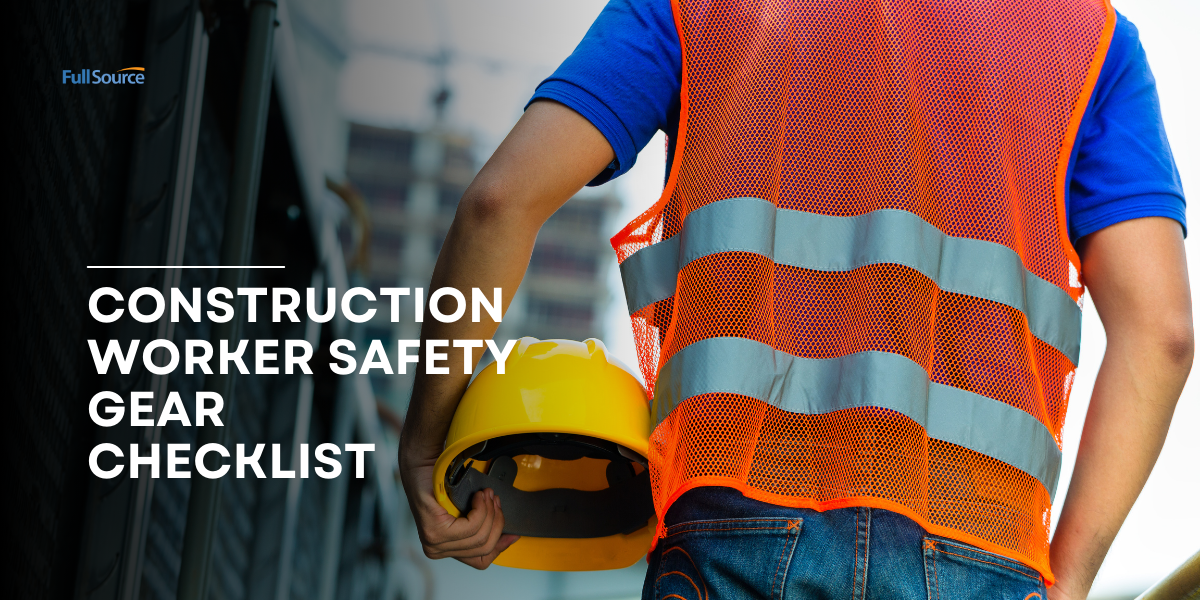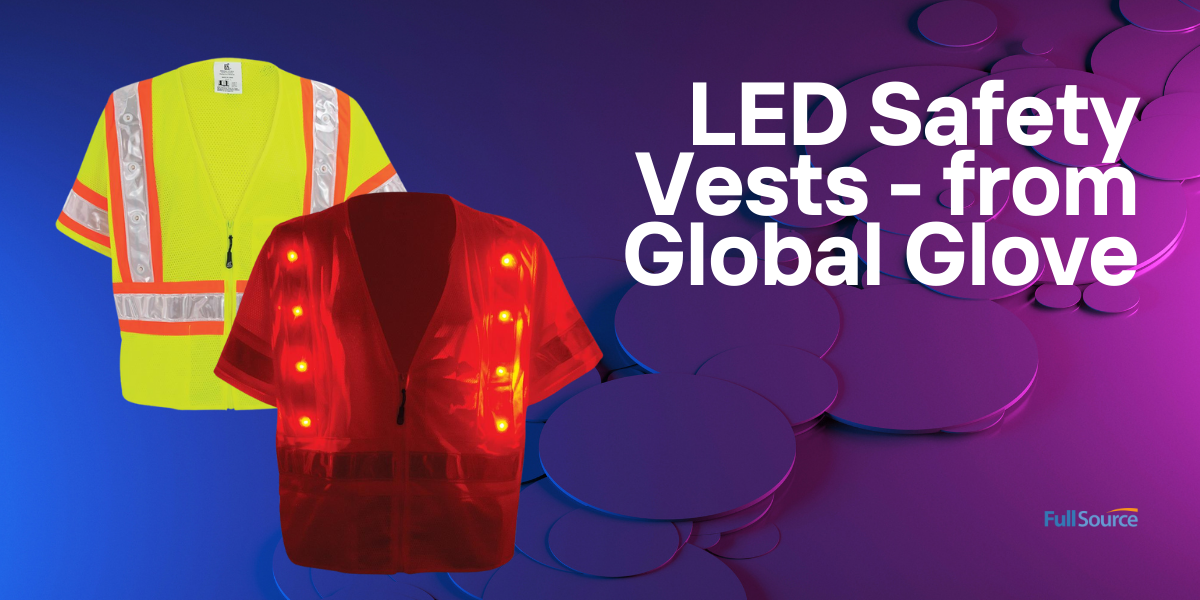Most often associated with high visibility orange and yellow/lime, safety vest colors span a broad spectrum. But what do these colors mean? Can you wear non-hi-vis in place of traditional fluorescent colors? Let’s take a look at the different color options and what they mean.
Safety Vest Colors Compliance
First of all, we offer almost a dozen different colors of safety vests. And this includes various shades of high-visibility colors like orange, yellow, and lime. There is a reason why these colors seem to be the most prolific. And that is because they provide the most visibility across a large variety of work environments. For workers to meet ANSI (American National Standards Institute) requirements, they must comply with certain color specifications.
And this includes safety vests that meet ANSI Class 2 and ANSI Class 3 standards. Highway and roadway workers for example must comply with OSHA and ANSI safety standards. An ANSI Class 2 safety vest needs to keep workers visible in traffic speeds between 25-50 mph. While an ANSI Class 3 safety vest keeps those working near traffic speeds of 50 mph or greater visible. These vests also require more high-visibility material and have longer sleeves than an ANSI Class 2 vest.
Stand Out & Stay Safe
According to OSHA’s construction standard, Subpart G, 29 CFR 1926.201, titled Signaling, daytime work garments for flaggers must be orange, yellow, strong yellow-green, or fluorescent versions of these colors. And for nighttime work in outside environments, garments must also be retro-reflective. The retro-reflective material shall be orange, yellow, white, silver, strong yellow-green, or a fluorescent version that is visible at a minimum distance of 1,000 feet. The color of a protective safety vest must be a contrast to the worker’s background.
Because colors like fluorescent yellow and orange stand out or contrast against most backgrounds, they are often used for safety vests. Wear hi-vis colors when the safety requirements for the job site demand them. But there are other color options for vests when you don’t need ANSI standards met. And this includes colors associated with public service and emergency workers. Red color safety vests are for fire emergency response personnel. And they are from best-selling brands like ERB, Kishigo, and PIP.
Public Safety
In addition to red, first responders like police officers wear blue color safety vests. Some public service safety vest colors like blue and red meet ANSI 207-2006 standards. And there are non-ANSI styles that feature silver reflective stripes for enhanced visibility in emergency situations. Sheriff’s officers wear brown color safety vests. Styles like the Kishigo 8054BZ include a pre-printed Sheriff legend. And incident command styles have a clear plastic cardholder on the front.
Also, incident command style vests come in colors like white, purple, and gray. There are mesh and solid style vests in various shades. ANSI 207-2011 public safety vests help you stand out in a variety of complex backgrounds. And black color safety vests help hide dirt and are often worn by security workers. There are also engineer and surveyor-style black vests with multiple pockets. ANSI Type O Class O1 black safety vests are for off-road use and provide additional visibility to workers who are not exposed to traffic.
Social & Community Causes
Another color option for safety vests is a more traditional green. These non-hi-vis shades of green are most often associated with CERT. Community Emergency Response Teams use these green color safety vests to stand out and stay recognized within their community. And vests like our Full Source PSV-EMS green public safety vest include pre-printed legends to designate authority.
Also, last, but not least, are pink color safety vests. And they range in shades of light pink to bright fluorescent pink. Women’s pink safety vests help you stand out from the traditional. They include styles fitted for the natural shape of women. The pink color is also worn for events and to promote awareness for social causes like Breast Cancer Awareness.
In conclusion, safety vests come in a variety of colors. And they are worn to designate authority, help you remain visible, and for personal style. No matter the reason, safety vest colors are more than high visibility.

